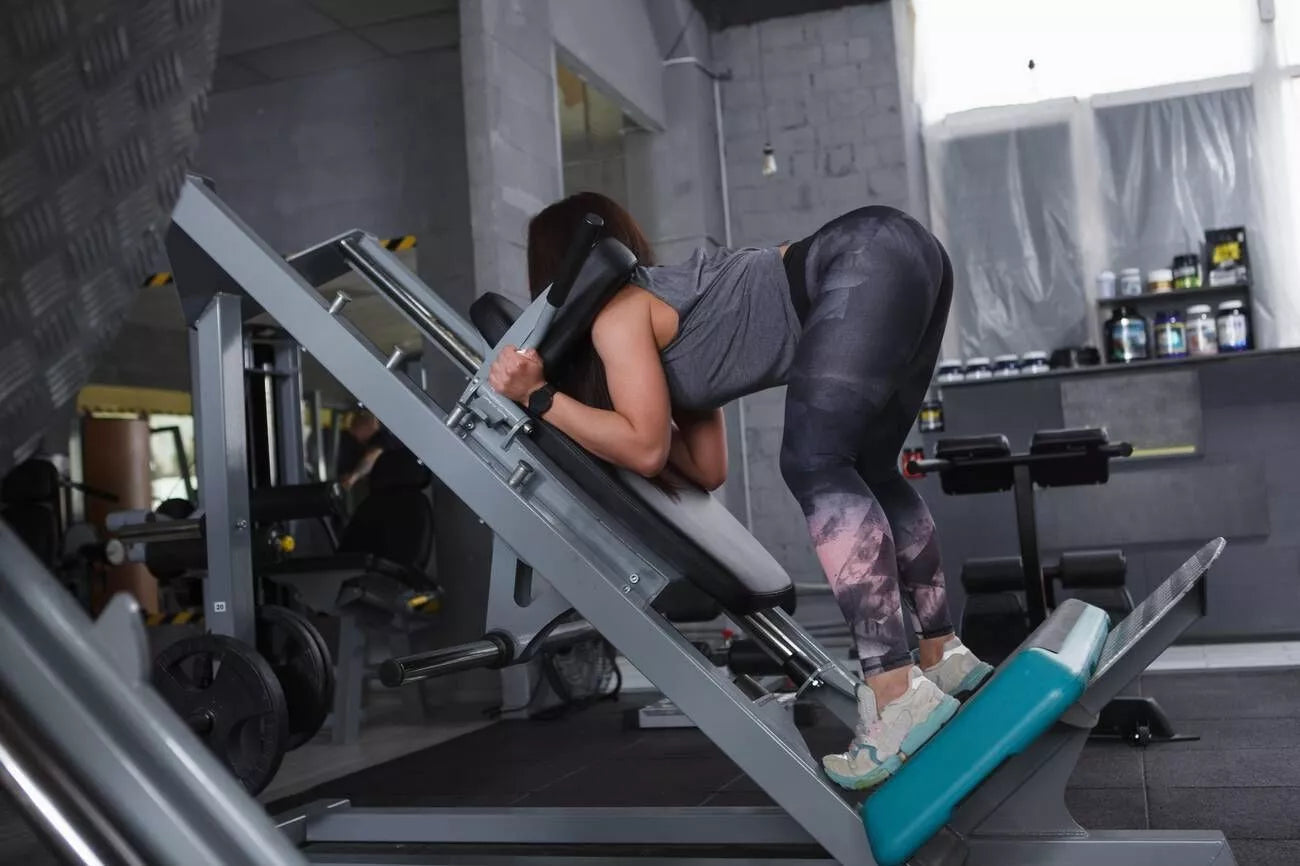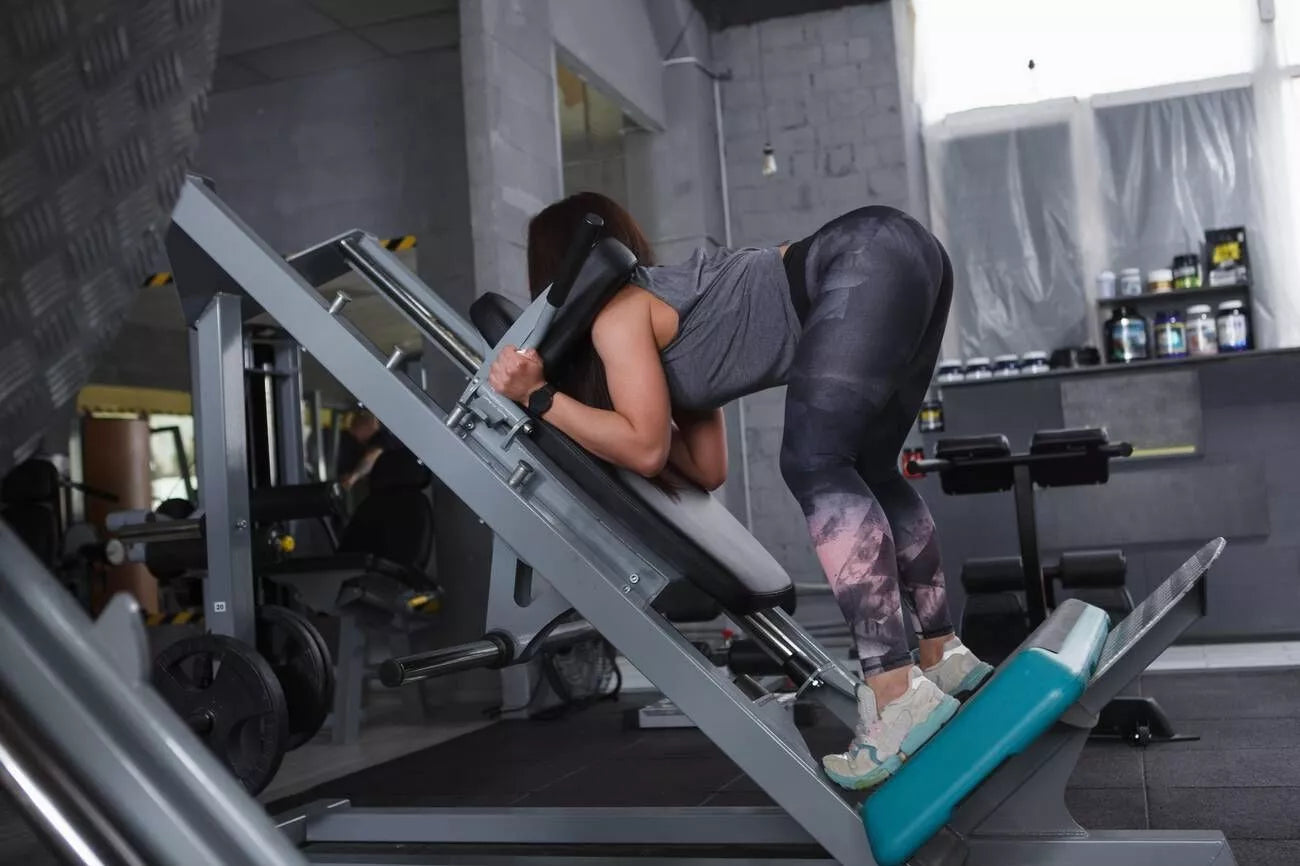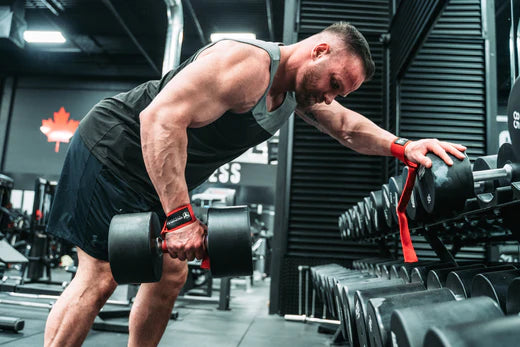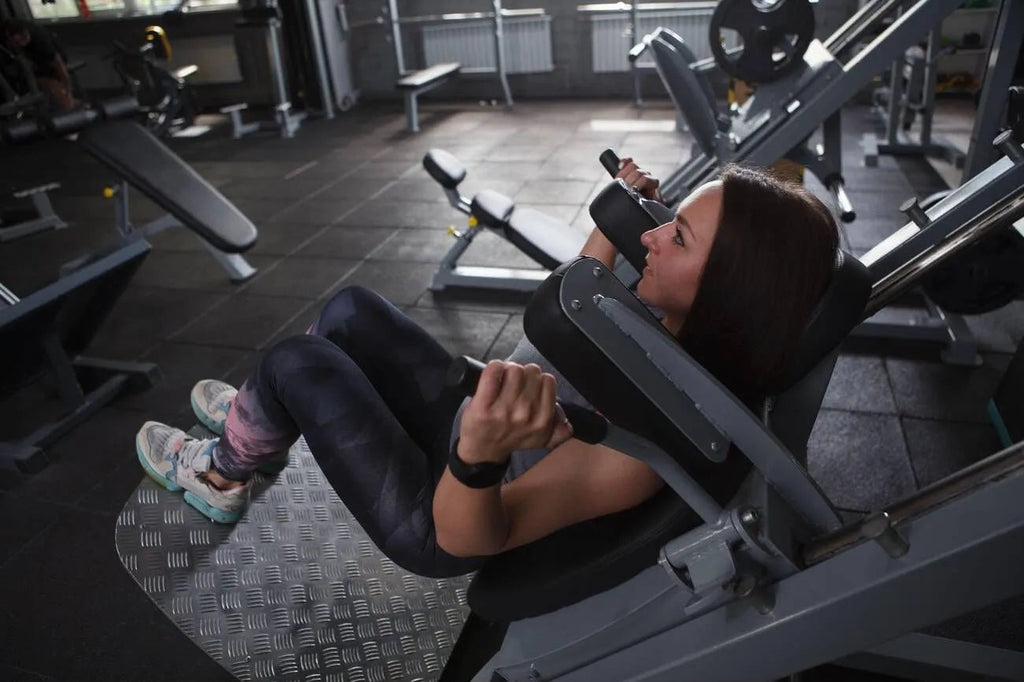7 meilleures alternatives au hack squat à essayer


Pour les exercices du bas du corps, le hack squat est un exercice très prisé des amateurs de fitness. Il cible de nombreux groupes musculaires et est efficace pour développer la force et la masse musculaire.
Cependant, en raison de l'indisponibilité des machines à hack squat dans certaines salles de sport ou de préférences personnelles, il est essentiel de trouver des exercices alternatifs offrant des bénéfices similaires. Dans cet article, nous explorerons diverses alternatives au hack squat qui vous permettront de renforcer le bas du corps sans recourir à la machine.
Exercice de hack squat
Avant de vous lancer dans des exercices alternatifs, il est essentiel de comprendre l'exercice du hack squat lui-même. Le hack squat consiste à se positionner sous une barre, les pieds écartés à la largeur des épaules. Dos contre la plateforme, vous descendez en position accroupie, puis remontez jusqu'à la position de départ.
Lors d'un hack squat, plusieurs muscles sont sollicités, notamment les quadriceps, les ischio-jambiers, les fessiers et les mollets. Cet exercice sollicite également l'articulation du genou, d'où l'importance d'une technique et de précautions appropriées. Une mauvaise posture ou un dépassement de ses limites peut entraîner des blessures. Il est donc essentiel de connaître les consignes de sécurité et les erreurs courantes liées au hack squat.
Alternatives au hack squat
Squat avec haltères
Le squat avec barre est une alternative polyvalente au hack squat, qui sollicite efficacement les muscles du bas du corps. Pour réaliser un squat avec barre, commencez par placer la barre sur le haut du dos, les pieds écartés à la largeur des épaules. Descendez lentement en position accroupie, en contractant votre ceinture abdominale et en gardant les genoux au-dessus de vos orteils. Cet exercice sollicite principalement les quadriceps, les ischio-jambiers et les fessiers.
L'un des principaux avantages du squat avec barre est sa capacité à solliciter plusieurs groupes musculaires simultanément. Des variantes comme le front squat, le sumo squat et le split squat bulgare permettent de concentrer l'attention sur différentes zones du bas du corps, offrant ainsi de la variété et une activation musculaire ciblée.
Lorsque vous effectuez des squats sur un rack à squat ou un power rack , il est important de privilégier la sécurité. Utilisez des bras de surveillance pour rattraper la barre si vous ratez une répétition et éviter ainsi les blessures. Assurez-vous également que les J-cups sont bien en place. sont réglés à la hauteur adaptée à votre position de départ. Une utilisation appropriée de ces dispositifs de sécurité vous permet de vous accroupir en toute confiance et réduit les risques d'accident.
Presse à jambes
La presse à cuisses est une autre alternative efficace au hack squat, que l'on trouve dans la plupart des salles de sport. Pour cet exercice, vous vous asseyez sur une machine équipée d'une plateforme lestée, placez vos pieds à la largeur des épaules sur la plateforme et poussez-la vers l'extérieur. Ce mouvement sollicite les quadriceps, les ischio-jambiers et les fessiers de manière similaire au hack squat.
Comparé au hack squat, le développé couché offre une amplitude de mouvement différente et peut solliciter moins l'articulation du genou. Cependant, il est essentiel de maintenir une bonne posture et d'éviter les charges trop lourdes pour prévenir les blessures. De plus, diverses presses à jambes, comme la presse à jambes horizontale, la presse à jambes verticale ou la presse à jambes à 45 degrés, proposent des variantes ciblant des groupes musculaires spécifiques.
Goblet Squat
Le goblet squat est une alternative populaire au hack squat, qui ne nécessite qu'un seul haltère ou kettlebell . Dans cet exercice, vous maintenez le poids près de votre poitrine, vous vous accroupissez, puis vous relevez en poussant jusqu'à la position de départ. En maintenant le poids devant vous, vous sollicitez vos muscles abdominaux et maintenez une position verticale, en ciblant les quadriceps, les ischio-jambiers et les fessiers.
Le goblet squat offre des avantages tels qu'une meilleure posture, une meilleure activation du haut du corps et une meilleure stabilité abdominale. Cet exercice peut également être modifié en utilisant différents poids ou équipements, comme un sac de sable ou un ballon lesté, pour vous permettre de vous dépasser et de progresser continuellement.
Squat avec ceinture
Le squat avec ceinture est une alternative originale au hack squat. Il nécessite l'utilisation d'une ceinture ou d'un harnais lesté. Au lieu de placer le poids sur vos épaules, cet exercice le suspend entre vos jambes. En attachant le poids à la ceinture, vous pouvez effectuer le squat sans haltère.
Le squat avec ceinture cible spécifiquement les quadriceps, les fessiers et les ischio-jambiers, offrant un entraînement intense du bas du corps. De plus, il s'adapte facilement à votre condition physique et à votre poids. Cependant, il est important de disposer d'une machine à squat avec ceinture ou d'un accessoire adapté pour réaliser cet exercice correctement.
Squat de mines terrestres
Le squat mine est un exercice polyvalent qui peut être réalisé avec un accessoire mine et une barre. Pour cet exercice, placez une extrémité de la barre dans l'accessoire mine ou calez-la dans un coin, en tenant l'autre extrémité à deux mains. En position accroupie, remontez, sollicitant quadriceps, ischio-jambiers et fessiers.
Le squat mine terrestre offre des avantages tels qu'une réduction de la pression exercée sur le bas du dos par rapport aux squats traditionnels et aux hack squats. Il permet également de privilégier l'entraînement unilatéral, ce qui peut contribuer à corriger les déséquilibres musculaires et à améliorer la stabilité. Des variantes du squat mine terrestre, comme le sumo ou le squat mine terrestre en position décalée, ciblent davantage des groupes musculaires spécifiques et offrent de la variété.
Sissy Squat
Le sissy squat est une alternative exigeante qui isole les quadriceps et sollicite le muscle droit fémoral, situé à l'avant de la cuisse. Pour réaliser un sissy squat, tenez-vous debout, les pieds écartés à la largeur des épaules, penchez-vous en arrière et abaissez-vous en gardant les genoux et les chevilles alignés. Cet exercice requiert équilibre et contrôle, ce qui le rend adapté aux utilisateurs de niveau intermédiaire à avancé.
Le sissy squat offre des avantages tels qu'une meilleure stabilité du genou et une plus grande amplitude de mouvement par rapport au hack squat. Cependant, en raison de la tension potentielle sur l'articulation du genou, il est essentiel de pratiquer une technique appropriée et d'éviter les charges excessives. De plus, l'utilisation d'un ballon de stabilité ou d'un repose-mains peut aider à maintenir l'équilibre tout au long de l'exercice.
Split Squat
Le split squat, aussi appelé fente stationnaire, est un exercice alternatif axé sur l'entraînement unilatéral. Pour effectuer un split squat, placez-vous debout, un pied en avant et l'autre derrière vous. Abaissez votre corps en fléchissant les genoux jusqu'à ce que le genou arrière touche presque le sol, puis poussez le pied avant pour revenir à la position de départ.
Les split squats sollicitent principalement les quadriceps, les fessiers et les ischio-jambiers, tout en sollicitant le tronc pour plus de stabilité. En isolant chaque jambe, les split squats corrigent les déséquilibres musculaires et améliorent la coordination. Des variantes comme les split squats bulgares ou les fentes marchées sollicitent davantage le bas du corps et apportent de la variété à votre programme d'entraînement.
Comparaison et sélection
Pour choisir la meilleure alternative au hack squat pour votre programme de fitness, il est important de prendre en compte plusieurs facteurs. Tout d'abord, identifiez les groupes musculaires ciblés et choisissez un exercice qui les sollicite efficacement. Ensuite, privilégiez la sécurité et la prévention des blessures en sélectionnant des exercices adaptés à votre niveau et à vos objectifs sportifs. Enfin, évaluez la disponibilité du matériel et la praticité de chaque exercice alternatif, afin de vous assurer d'avoir accès aux outils nécessaires à une exécution correcte.
Pour évaluer plus précisément l'efficacité de chaque exercice alternatif, tenez compte de facteurs tels que l'activation musculaire globale, le potentiel de progression et la transférabilité à d'autres exercices et activités. Il est recommandé de consulter un professionnel du fitness ou un entraîneur qui pourra vous guider dans le choix des alternatives les plus adaptées à vos préférences, objectifs et besoins spécifiques.
Forme et technique des alternatives au hack squat
Une posture correcte garantit une sollicitation efficace des muscles ciblés, optimisant ainsi les bénéfices de l'exercice tout en minimisant les risques de blessure. Il est essentiel de maintenir une colonne vertébrale neutre tout au long de l'exercice, en évitant de cambrer ou d'arrondir excessivement le dos. Cette posture offre une base stable, essentielle à la santé du dos. De plus, veillez à toujours placer vos genoux au-dessus de vos orteils, surtout lors des squats et des presses à cuisses. Un mauvais alignement peut solliciter l'articulation et les ligaments du genou, entraînant des problèmes potentiels. L'utilisation de genouillères peut être particulièrement bénéfique, car elles offrent un soutien et une stabilité accrus, garantissant ainsi la protection et le bon alignement des genoux. L'engagement du tronc est un autre aspect essentiel ; considérez-le comme le moteur central qui soutient et pilote vos mouvements. Une respiration correcte, expirant pendant l'effort et inspirant pendant la relaxation, peut améliorer considérablement vos performances.
Le positionnement des pieds joue un rôle essentiel dans ces exercices. Il peut influencer l'activation musculaire ; par exemple, une position plus large peut cibler davantage l'intérieur des cuisses, tandis qu'une position plus étroite sollicite les quadriceps. Lorsque vous explorez des alternatives au hack squat, n'oubliez pas l'importance d'accessoires comme les genouillères. Elles renforcent non seulement la confiance en soi en offrant un filet de sécurité, mais aident également à obtenir une amplitude de mouvement plus profonde, essentielle au développement musculaire. Même si vous êtes expérimenté, il est utile de vérifier régulièrement votre technique. Enregistrer vos séances ou demander l'avis d'un professionnel du fitness peut vous éclairer et vous assurer de soulever non seulement des charges lourdes, mais aussi correctement.
Conclusion
Intégrer des exercices alternatifs pour renforcer et développer les muscles du bas du corps est un aspect important de tout programme de remise en forme complet. Si le hack squat est un choix populaire, la disponibilité d'exercices alternatifs permet d'obtenir des résultats similaires sans recourir aux machines. Des options telles que le squat à la barre, la presse à cuisses, le goblet squat, le squat à la ceinture, le landmine squat et le split squat offrent une gamme variée de mouvements ciblant différents groupes musculaires du bas du corps.
En comprenant la description, la technique, les avantages et les limites de chaque exercice alternatif, vous pourrez choisir en toute connaissance de cause l'alternative au hack squat la plus adaptée à vos besoins. Il est important de se remettre constamment en question, d'expérimenter différentes variantes et d'être à l'écoute de son corps pour trouver celle qui vous convient le mieux. Privilégiez la sécurité, une bonne technique et une progression progressive pour renforcer efficacement le bas du corps et atteindre vos objectifs de remise en forme.


